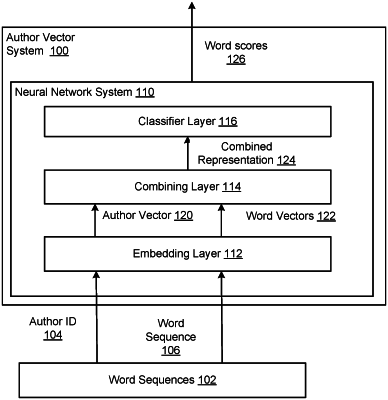| CPC G06F 40/289 (2020.01) [G06F 16/31 (2019.01); G06F 16/35 (2019.01)] | 17 Claims |

|
1. A method performed by a system of one or more computers, comprising:
obtaining a request including an input sequence of words; and
obtaining a predicted next word for the input sequence of words from a machine-learned model, the machine-learned model being configured to take an author identifier identifying the author and the input sequence of words as input, the predicted next word being provided as a response to the request;
wherein the machine-learned model includes:
an encoder neural network configured to take as input the input sequence of words and output an alternative representation of the input sequence, and
a combining layer configured to take as input the alternative representation of the input sequence and an author vector generated based on the author identifier and output a combined representation of the input sequence.
|